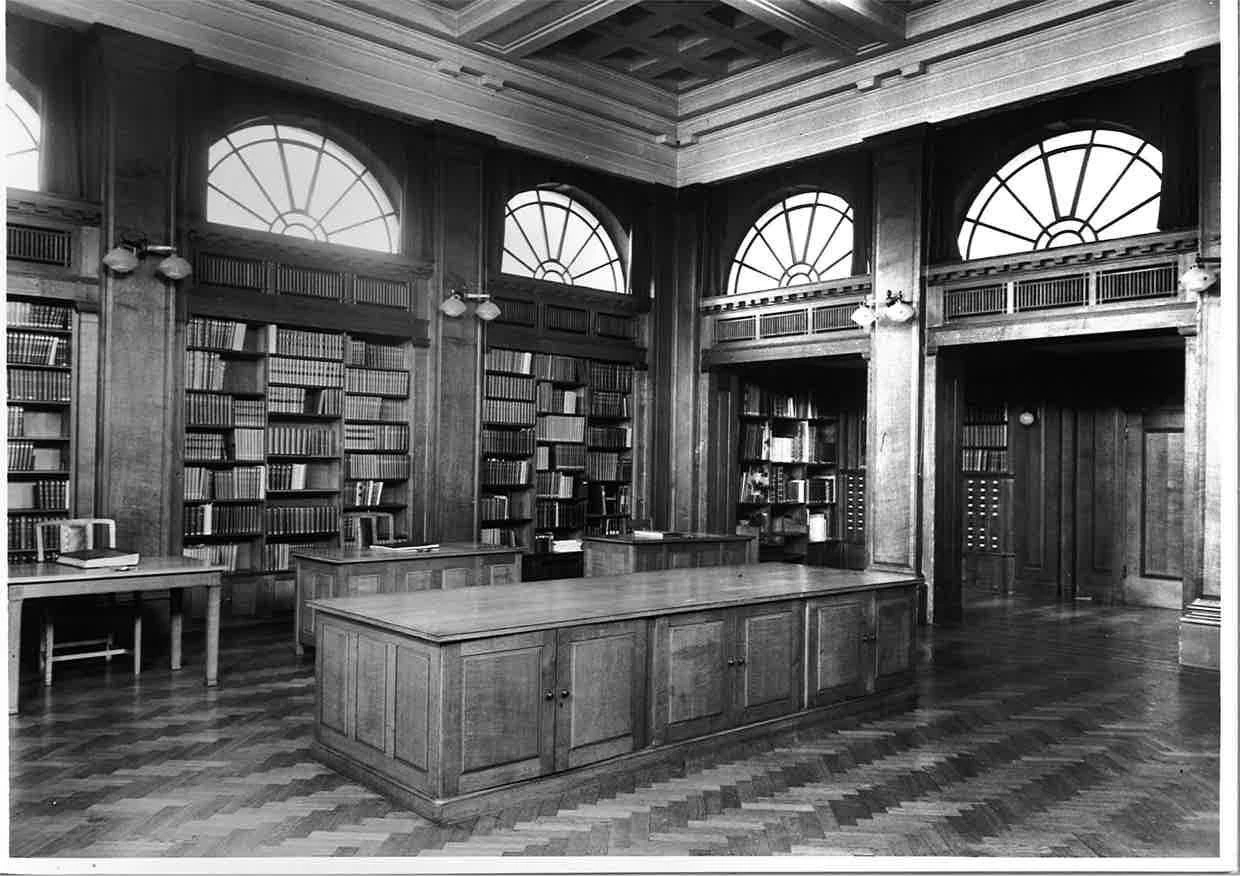Hetty Edwards – Part Three
, 6 September 2017
My search for Hetty returned to the Museum. Our records showed that Hetty had volunteered with the British Red Cross Society during the Second World War. A number of items donated by Hetty are held at St Fagans including her nursing uniform, British Red Cross Society Badge and certificates. Unfortunately, no formal service records are held by the British Red Cross from that time. However, a chance finding when clearing out an old filing cabinet in the museum’s attic, revealed so much more! I came across a folder called ‘Talks by Librarians’. As I glanced through it my heart started to race. There at the back was an old typewritten document entitled ‘A Life Amongst Books’. A quick look at the first page confirmed my suspicions: this was the title of a talk given by Hetty to the Barry Twentieth Century Club!
In it, Hetty describes how important books were to her from an early age:
‘In common with all youngsters my first love was the picture book, and especially if the pictures were in colour, however ethereal, gruesome or gory they might be.’
‘On winter evenings during the first World War, we knitted whilst Father stoked the fire and read to us’.
Later, Hetty explains how, having left school undecided on a career, she became a librarian, quite by accident. She spent a summer at the President of the National Library of Wales’ home, where she successfully prepared a card catalogue of his books, mainly to keep herself amused. At that time the National Library of Wales had newly been considered as a training centre for potential librarians in Wales. Hetty was asked to apply and was successful. As a Pupil-assistant, Hetty learnt the art of Librarianship, with ‘practical experience and theoretical training synchronised’.
Hetty completed her training in 1931 and was enjoying ‘resting on my oars’ when she was invited to apply for the position of Librarian at the National Museum, Cardiff. Hetty and another applicant were interviewed by the Museum Council, and on the 26th June 1931, Hetty was duly appointed Librarian. A job which she adored and felt honoured to serve for the next 39 years.
Trawling through the Museum's Annual Reports and Council Minutes, I found references to Hetty's work in the Library. Hetty was frequently called upon to give lectures. At the 21st Annual Conference of Libraries in Wales, June 1954, she addressed the Reference and Special Libraries Section (Western Group) of the Library Association on ‘Museum Libraries and the Library of the National Museum of Wales’:
“The function of a special and research library such as ours is to serve those who have already been converted to an ardent pursuit of knowledge…”
In another talk she gave in the 1950’s Hetty is quite clear on the role of books and libraries:
“I believe that books are very necessary tools and should be readily available where they are needed most.”
“A library thrives on use – proper use we hope. In any case, most librarians would rather run the risk of ‘wrongful’ use rather than that of [dust and] ‘rust’.”
In the 1950's she was frequently heard on the radio on the Welsh Home Service talking about the Museum. In 1958 Hetty appeared in a BBC Television programme, discussing the Schools Service section of the National Museum of Wales Jubilee film.
She was also active on various committees, serving for example, on the editorial board of the Bibliography of Welsh Poetry (1954-55). She was Chairman of the Wales & Monmouth Branch of the Library Association for 1967 and was their representative on the committee responsible for the 1968 Welsh Books Fair. That year she was also invited to serve on the Editorial Committee of the Cardiff Naturalists’ Society.
“In museum life we are deeply conscious of the past, but we remember too that today is tomorrow’s yesterday. As librarians let us face the challenge of the future with confidence.”
At the end of August 1970, Hetty retired from the Museum, having served a very successful and fulfilling 39 years in the role she adored.
![Hetty Edward's Red Cross uniform [from the collections at St Fagans National Museum of History]](/media/42608/version-full/EH-Edwards-1-DF202606.webp)
![Hetty Edward's Red Cross badge [from the collections at St Fagans National Museum of History]](/media/42609/version-full/EH-Edwards-2-DF202578.webp)
![Hetty Edward's Red Cross Society certificate for 'First Aid to the Injured' [1943]](/media/42607/version-full/EH-Edwards-10-DF202577.webp)


Comments - (2)
Thank you very much for your message. We ask visitors not to take pushchairs into the smaller historic re-erected buildings at St Fagans National Museum of History as part of our conditions of entry and care of these unique historic buildings. Following a recent review, we do allow pushchairs into St Teilo’s Church, Oakdale Workmen’s Institute and the shop at Gwalia Stores. We receive approximately 600,000 visitors to St Fagans every year and our small team of conservation staff continue to strive to safeguard all the historical buildings and contents, gardens and surrounding land; the front-of-house staff also try to maintain standards of maintenance and visitor care for all our customers.
In some instances, parents do carry their small children into some of the historic buildings of interest, and where it is practicable and safe to do so, we also allow entry for disabled people in wheelchairs and children in adapted buggies.
The Museum continues to monitor the situation and feedback from all visitors are noted and discussed at monthly meetings.
Thank you,
Marc
Digital Team